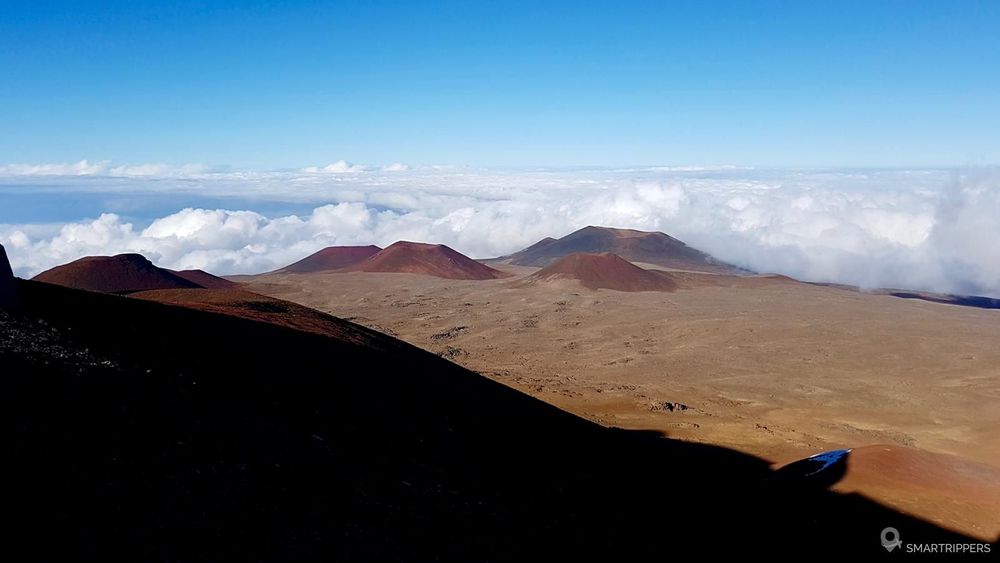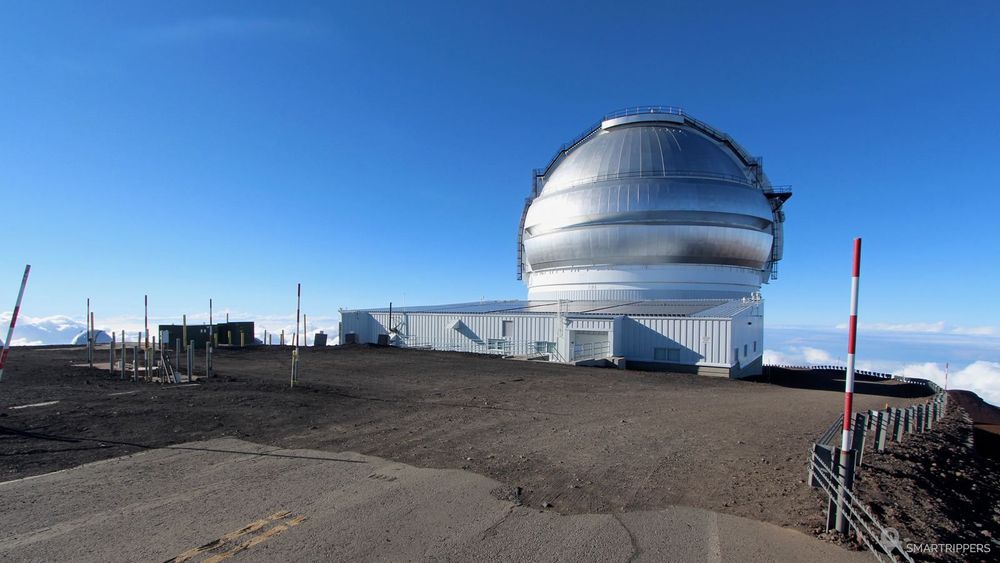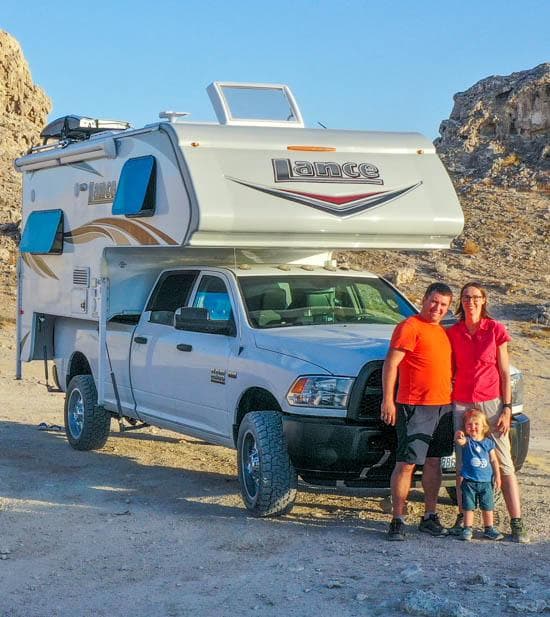- Hawaii
- Big Island
- Climbing the Mauna Kea, Hawaii's highest peak

There are places on earth that make you vibrate more than others. The Mauna Kea is one of those. The Mauna Kea is a sleeping red volcano that is about 1 million years old.
It is a curiosity for several reasons:
- First, it is the highest peak in the Pacific (4,207 m) and consequently Hawaii.
- Secondly, it hosts Lake Wai'au which is, I give you in thousand, the highest lake in the Pacific basin at 3,968 m (we will come back to this later).
- Thirdly, because it is home to a large scientific community with the Onizuka Center at an altitude of 2,800 meters and impressive telescopes at the top that scan the sky (see also later in this article).
- And finally because coming from the city of Kona located on the west side, you will have crossed no less than 7 different types of climates!
And just for that, I say "Bravo!" lady nature!

Summary
1Mauna Kea and Mauna Loa: Two huge volcanoes
But the journey to the summit of Mauna Kea is getting ready, you are after all preparing to reach 4,207 m above sea level, it's not nothing for the organism! Speaking of elevation, when you're on the top, you say you're on a mountain more than 10,000 metres high, which is higher than Everest when you count the submerged part, because the base of Mauna Kea is at the bottom of the ocean, which is an island. But nothing comparable with its neighbour the Mauna Loa, which rises to 40 m less (that is to say to 4 169 m), but which rises to 17 000 m (yes yes, 17 km) above its base! This volcano is simply huge!!
2Getting to the summit of Mauna Kea
Before you consider attacking this monument, you should be aware that you may not be able to get there on your own. In any case not legally, because almost all car rental companies (except 1) forbid the ascent to the summit, the road being transformed into a section of rock "relatively well maintained" after the Visitor Center, located halfway between the summit and the junction with Saddle Road. Note that in any case, the road allows all types of vehicles to climb up to the Visitor Center.
But don't despair! You have 3 options to get up there.

Book an excursion
The second solution is organized tours, with more or less activities in the program (sunset, observation of stars, observatory visits,...) sometimes including meals, for prices starting at around $200/person.
We did not explore this route, but shortly before the end of the sunset, we saw about 4 to 5 mini-buses arriving at the summit, which parked behind the few cars at the top. The vehicles stayed for about 20 minutes, the sunset time, and left as dry as before. It was making a freezing wind, so tourists ended up staying inside the buses for the most part.
Climbing with a classic 4x4 rental vehicle
Third and last solution by car: braving the forbidden. By the very admission of the rental company where we took our car, an SUV 4x4 is more than enough. You just have to be careful where you put your wheels on, and not to overuse the downhill brake by playing with the gearbox (low or short speed). The track has no obstacle to cross, it is just a pile of small pebbles and therefore relatively easy to walk.

On the price side, we certainly paid $200 more than a "standard" car for a 4x4 upgrade for 8 days rental, but we were able to choose the ideal time to go to the summit, and we were free to stop when we wanted to observe the stars. And that's priceless! You can also rent a 4x4 by the day by booking it on the Internet (this will be much cheaper than at the counter).
However, keep in mind that you will NEVER be insured on an unsurfaced road in the USA.
For those who wonder if it is still possible to climb to the top in a "standard"vehicle, I will say that this is possible but only if it is equipped with a speed selector switch to play the engine brake down (if not there is a risk of overheating the brakes). However, I do not recommend this last solution, because on the one hand it is forbidden and on the other hand, as the road conditions may vary, you could get stuck (and there you will not be insured) or even damage the vehicle.
End the ascent of Mauna Kea on foot from the Visitor Center
If you are an extreme hiker, you can try this option (which we haven't tested). The trail starts from the Visitor Center and climbs up to the summit for 10 km to climb the remaining 1400 meters of altitude difference.
According to Visitor Center information, it takes about 8 hours to make the round trip. Be well prepared before climbing because the effects of altitude combined with physical effort can be dangerous. Also, be sure to check with the Visitor Center before you start your hike and equip yourself accordingly (UV protection and long clothing).
3The effects of altitude on your body
The effects of altitude on your body must also be considered. Of course you know that lack of oxygen affects your breathing. But it's not the only effect you're looking for. Without wishing to panic, the visitor center will warn you about the effects of altitude: migraines, nausea, tremors, dizziness, pulmonary edema, pulmonary edema, cerebral edema or severe sunburn, and the risk of eye damage due to UV rays are also symptoms observed in some sensitive people.
Whether you are trained to exercise or not, altitude sickness can affect everyone.

Luckily for you, the Smartrippers are here! If you follow a few simple tips, you'll put all the odds on your side.
First, if you have been drinking alcohol before going up the stairs, if you are pregnant, if you have a history of respiratory problems or if you are in precarious physical condition, we strongly advise against venturing to Mauna Kea summit. If you've done some scuba diving the day before, forget the summit because you'll have to leave at least 24 hours to acclimatize. However, you can easily get to the Visitor Center (2,800 m) and observe the stars at nightfall. Secondly, avoid going up after a day of idleness and sunbathing at the beach, as the contrast for your body would be stronger. You can still try your luck by increasing the time of the next council by 30 minutes.Third, climb in steps and stop regularly to get used to your body. Take a 30-minute break at 1:00 a. m. every 1,500 metres. A stop of at least 45 minutes at the Visitor Center will be mandatory before finishing the ascent.Fourth, WEAR THE SUNNESS LUNETTES. It's silly, but we both had problems with our eyes because we didn't wear our sunglasses all the time (UV rays are much more violent at this altitude). Results: retinal persistence for almost an hour (sort of stars in the eyes) for Sandrine and similar and punctual worries for me, for 2 weeks...
If, in spite of all this advice, you feel the symptoms mentioned above, immediately go down a few hundred meters to avoid worsening your condition, treatment in the United States is not given!
4The stages of the ascent of Mauna Kea by car
Make a first stop at an altitude of 2,000 m
Coming from Kona, stop at Mauna Kea State Park, mile marker 34 on Highway 200. You will find toilets, picnic and get used to the altitude. From Hilo, park at the intersection of Route 200 and the ascent to Mauna Kea, on the Pu' u Huluhulu car park, from where you can climb. There's nothing to stop you here if you're from Kona. No amenities here. Here you are at 2,000m, but the climb so far has been easy.
Ascent to Visitor Center
Serious things begin when you finally take the road to Mauna Kea. 10 km from the Visitor Center, which you will travel in about 10 minutes, for an additional 800 metres of elevation. The stopover is mandatory here to get your body used to the following. We decided to spend an hour there to take the climb. And that's a good thing, because the Visitor Center offers videos to learn more about geology, history, and the place of the volcano in Hawaiian culture.
Before returning to the road, remember to use the Visitor Center toilets (only chemical toilets are located in rare places near the summit).
From the Visitor Center to the summit of Mauna Kea
From the Visitor Center, the road gives way to a 7.4 km high pebble track, although it is regularly maintained. A sign here indicates that the rest of the track is reserved for 4x4 vehicles.

The road climbs harder, forming large laces over a dozen kilometres. 10.5km after leaving the Visitor Center, you will find a small car park with about 15 parking spaces and a chemical toilet on the right-hand side of the road. This location marks the start of the trail to Wai' au Lake (see next paragraph), and the opportunity to get used to the 3,900 m of altitude you have just reached.
Take your time, breathe deeply and slowly and don't make unnecessary efforts. Stay here for a good half an hour before you consider starting the hike, or about 15-20 minutes if you want to go straight to the summit. It is certainly a long time, but it would be a shame to have to go back down in disaster.

It was at this altitude that we began to feel the first symptoms. As soon as our vehicle stopped, we both felt as if we were on the deck of a boat, the ground didn't seem stable. The effect lasted about 15 minutes and then faded. Then as soon as we got out, we immediately suffered retinal persistence because we didn't put on our sunglasses right away. Here, UV rays are more violent! Put on your sunglasses and keep them on!
To finish the ascent, you only have to cross the last 300 meters of elevation to find yourself at the top of the Pacific with this breathtaking view (but not too much, it's not easy to find oxygen here then good... :o) ).
To do near the summit
The little hike to Wai'au Lake
Would you like to stretch your legs and have the sensations that high altitude hikers feel? We encourage you to do the Wai' au Trail which bypasses the Pu' uhaukea Cinder cone, passing by the Wai' au Lake. Count approximately 1.4 km to reach the lake from the car park, or 2.8 km round trip.
Wai' au is sacred to Hawaiians because for them, Mauna Kea is the "umbilical cord that connects the earth to heaven". The lake being part of the volcano and a source of life, it was named so in homage to one of the snow goddesses: Wai' au. It is therefore essential to respect this place.
Here the Hawaiians came to offer the goddess the umbilical cords of the newborn babies to give them strength and prosperity in their future life. Even if this ritual has ceased nowadays, we advise you not to quench your thirst here, the image of umbilical cords floating on the surface of the lake should dissuade you! But I can assure you, we don't see anything floating on the surface of the lake.

Take your time, take your time, walk quietly because the lack of oxygen combined with the effort has a significant effect on the body! When I say slowly, it's almost a step per second to start with! You will soon feel breathless and will be forced to adapt your rhythm. It's pretty strange at first because you feel like you're over 80 years old, but you're taking the rhythm. After 300 meters you will probably take a break, but don't worry, that's normal ;)

The ascent is not long, but slightly uphill. We took almost 1h30 to make the loop of about 2.8 km (we took the wrong path and were forced to cut through the lava rocks to reach the lake). So to make no mistake, as soon as you arrive at the fork, take the path on your left. The one on the right rises up and joins the observatories near the road.
Visit the interior of the Subaru Telescope
A guided tour of one of the summit's telescopes: the Subaru Telescope. Two types of tours are available: English and Japanese. Start looking into it as soon as your travel dates are known, places are counted, and at the time we write these lines, work is planned for the coming months which will further reduce the chances of making the visit. More info and reservations on the telescope website.
See the sunset at the summit
The advantage of the Mauna Kea is that it is so high that its summit is almost all year round above the clouds, which makes it possible to discover an immense unobstructed view on the Mauna Loa, the neighbouring summit, and eventually the Haleakala, Maui's summit which rises to more than 3,000 meters.
The track provides direct access to the summit. It also serves the various observatories which are located at the top. Follow the road that seems to go up the highest, and at the end, you will arrive on a large flat surface that will be used as temporary parking during sunset.


Remember to climb early enough to have time to acclimatize to the altitude, knowing that the sunset is relatively fast, because we are closer to the equator than in our regions. Don't forget to inform yourself beforehand about sunset times. If you're worried about having your head in the clouds, you can check the webcams at the top by following this link.
Once you have reached the top, you can park your vehicle in the area that suits you best. For example, we were installed on the edge of the platform, so that we could have the best seat and admire the sun decaying from the car.

When we were there in mid-April, there were only 5 cars, in addition to the 4 or 5 mini-buses of organised excursions, which parked behind us. We didn't have many of us, which leaves the photographers the possibility to have all the space to immortalize the moment.
Useful hints: If you need to go to the toilet, you can use the cabin located at the Wai' au trail car park, located about 4.5 km down the road.
Once the sunset is over, you can either stay in place to observe the sky and the arrival of the first stars, or gently descend towards the Visitor Center. Be careful because there are no lights on the road. Remember to use your engine brake carefully, using short or low speeds to get off the bike quietly.
Watching the stars from the Visitor Center
Another activity not to be missed is the Star Gazing Program at the Visitor Center this time (thus accessible to everyone). On Tuesdays, Wednesdays, Fridays and Saturdays, from 6 p. m. to 10 p. m., this free event is normally reserved for the first 115 vehicles arriving (number of parking spaces). However, as the participants leave in the evening, it is quite possible to come and attend the second half of the evening. We were able to access the car park without waiting for our descent from the summit.
The Star Gazing Program is an exchange program between Visitor Center employees, enthusiasts and the public about stars and astronomy in general. The Visitor Center and enthusiasts share their knowledge and make their equipment available to observe the celestial bodies and other nearby galaxies, and thus give birth to vocations. During our visit, one person told the story of the constellations by pointing a laser in the sky to identify them. It's of course in English. We were also able to observe a galaxy in a digital telescope that was made available to the public, really impressive!
Surprisingly, Big Island cities turn down their lights so as not to disturb the observatories of Mauna Kea. Combined with Hawaii's isolation in the middle of the Pacific Ocean, you are now in one of the most suitable places to observe the universe from our good old Earth. With the naked eye alone, you'll see the thousands of stars of the Milky Way, it's superb!
5How do I dress to go up to the Mauna Kea?
Hot as hell! We flirted with the 1°C during our visit to the summit and about 10°C at the Visitor Center. We thought it was a bit excessive to pack our suitcases with mid-season hiking pants and our Goretex jacket in the tropics, and yet it was precisely our Icelandic outfit that we had to wear here. This means that the effect of temperature and wind is an important parameter to remember.

The wind was so cold that we were frozen there, forcing us to regularly get into the car to warm up. So take a long pair of pants, a good windproof jacket, a warm fleece, your gloves, hat and scarf with you to the top!
We are Sandrine and Flo, French thirty-somethings. In 2019 we quit everything to live our dream, become nomads and travel around the world. We left with our baby, Lena, who was only 5 months old at the time. After a first trip around the Pacific Ocean by plane and a long 3 months stay in Hawaii, we left to discover Iceland for 3 months on board our 4WD pickup truck and truck camper. Then we continued our adventure in North America.

Today, if we can continue this adventure, it is above all thanks to our blog, Smartrippers! We created it one day in 2016, with the desire to share our good travel tips, without thinking that it would lead us there! We have developed it a lot over the years and have become experts on our 3 favorite destinations: Hawaii, Iceland and the American West. We now guide you to these destinations to help you plan the trip of your dreams!
Follow our adventures!